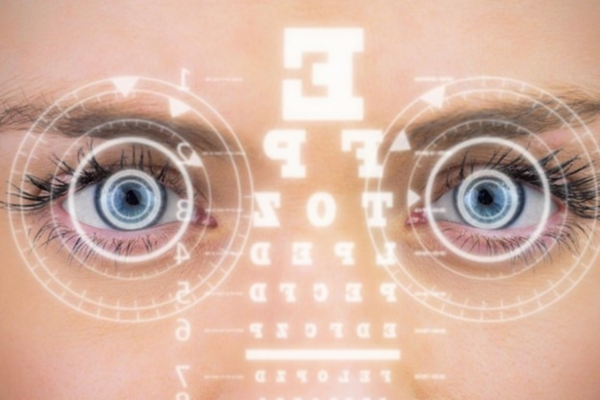Options in Laser Vision Correction Give Surgeons the Power to Personalize
Because LASIK is so popular, you may think it is the only laser vision correction procedure available. This couldn’t be further from the truth. In fact, there are several techniques and technologies that make up a spectrum of choices in laser vision correction. Taken together, laser vision correction options give surgeons the ability to recommend a procedure to address a patient’s specific vision needs and lifestyle demands.
If you are thinking about moving beyond glasses or contact lenses and wondering about laser vision correction, below is an overview of the most common procedures available in the U.S. today.
LASIK (Laser In Situ Keratomileusis)
Like other types of refractive surgery, the LASIK procedure reshapes the cornea to enable light entering the eye to be properly focused onto the retina for clearer vision. LASIK is a two-step procedure:
The first step makes a micron-thin, circular flap in the surface of the eye – called the cornea. This is performed under eye drop anesthesia, takes just a few seconds and the surgeon uses either a microkeratome or femtosecond laser. Next, the flap is gently lifted to reveal the surface where the actual vision correction treatment takes place.
In the second step, a computer-guided excimer laser removes the microscopic pieces of tissue creating the patient’s vision problems. The flap is then laid back in place to act as a natural bandage and protect the reshaped cornea as it heals. The results — improved vision without eyeglasses or contact lenses — can usually be seen in as little as 24 hours.
How good is LASIK? To date more than 7,000 peer reviewed clinical papers have been published defining LASIK’s reputation for excellent visual outcomes and safety profile. Recently, a team of researchers from refractive surgery centers in the United States and Germany reviewed the results of 97 LASIK studies published between 2008 and 2015. As a result, the outcomes of nearly 68,000 procedures were analyzed and found:
- 99.5 percent of eyes attained uncorrected distance visual acuity better than 20/40 after LASIK.
- 98.6 percent of eyes were within +/- 1.0 diopter (D) of the target refractive outcome.
- 90.9 percent of eyes were within +/- 0.5 D of the target refractive outcome.
- 98.8 percent of patients reported being satisfied with their LASIK results.
Who are good candidates for LASIK?
LASIK is a great option for adult patients with a stable prescription – meaning it hasn’t changed in over a year – for nearsightedness, farsightedness and/or astigmatism with adequate corneal thickness. If you’re not a good LASIK candidate, a number of other vision correction surgeries are available, such as PRK and SMILE laser eye surgery, but there are others.
- Procedure time: less than 10 minutes per eye
- Typical results: 20/20 or better vision without glasses or contact lenses
- Recovery time: a few days to several weeks for vision to stabilize
- LASIK Cost: $2,000 – $3,000 per eye
PRK (Photorefractive Keratectomy)
With more than 20 years of clinical performance delivering excellent outcomes safely and effectively, PRK surgery is a great alternative to the more popular LASIK procedure. Like LASIK, PRK is both safe and effective. Visual outcomes with PRK are similar to LASIK, however the recovery process can be challenging to some as there is some discomfort involved.
Just like with LASIK, eye drops are used to numb the eye to make the patient comfortable during the PRK procedure. The outer layer of the cornea, known as the epithelium, is removed and an excimer laser is used to remove microscopic amounts of tissue from the surface of the cornea. The result is a smooth, shaped surface that improves the eye’s ability to focus.
To protect the newly shaped surface of the eye, a contact lens is put in place as a bandage until the epithelium layer heals, which takes about 5 days. While the procedure itself is relatively painless, once the anesthesia wears off patients typically experience discomfort, blurred vision, dry eye, glare and haloes during the recovery process. This healing process can take several days and up to three months for patients to achieve their best corrected vision. During the recovery and healing, patients are prescribed a routine of eye drop medications to prevent infection and inflammation and keep the eyes comfortable by maintaining the right moisture balance.
How good is PRK? The result from PRK are very similar to LASIK. However, the healing process can impact the final best corrected visual outcome, resulting in either undercorrection or overcorrection that may be resolved with additional treatment.
Who are good candidates for PRK?
PRK eye surgery is particularly well suited for adult patients with stable prescriptions of nearsightedness, farsightedness and/or astigmatism seeking a laser vision correction option, but who may not be eligible for LASIK. Patients with thin corneas, large pupils, corneal scarring or those who enjoy playing contact sports or who have jobs with a high risk for eye injury such as emergency responders often benefit from PRK.
- Procedure time: about 10 minutes per eye
- Typical results: 20/20 vision without glasses or contact lenses
- Recovery time: several days to several weeks for vision to stabilize
- PRK Cost: $2,000 – $3,000 per eye
SMILE (Small Incision Lenticule Extraction)
SMILE is a laser vision correction procedure performed using a femtosecond laser to create a thin disc of tissue – similar to the shape of a contact lens – from within the layers of cornea. The disc of tissue, known as a lenticule, is removed through a small opening in the surface of the eye, also created by the laser, to change the overall shape of the cornea to improve vision while leaving most of the eye’s surface undisturbed.
Because the incision in the surface of the eye is small – less than 6 mm – the SMILE laser eye surgery procedure is considered minimally invasive. SMILE has been available outside the United States for more than 10 years, and more than 1.5 million procedures have been performed worldwide.
How good is SMILE? Research is showing SMILE produces virtually the same visual acuity as LASIK for the correction of nearsightedness. To date, more than 400 clinical studies have been conducted to determine it is a safe and effective vision correction option for those who are good candidates. Recent research finding include:
- Six months after surgery, 99 percent of participants achieved 20/40 or better vision.
- 88 percent of participants achieved 20/20 or better vision at the 6-month post op visit
- 91.7% stated they were “Very Satisfied” with results of their surgery.
Who are good candidates for SMILE?
SMILE laser vision correction is an option for adult patients over the age of 22 with stable nearsighted prescriptions with or without astigmatism. SMILE is not approved for the treatment of hyperopia or farsightedness.
- Procedure time: About 10 minutes per eye/ The same as LASIK
- Typical results: 20/40 or better vision without glasses or contacts.
- Recovery time: a few days to several weeks for vision to stabilize
- SMILE Cost: Similar to LASIK and PRK, approximately $2,000 – $3,000 per eye
Is a laser vision correction procedure right for you? The fact is, there are several options surgeons can recommend to personalize a treatment to a patient’s specific needs, but not everyone is a good candidate. Therefore, the best way to find out what laser vision correction procedure, if any, is appropriate for your eyes, vision and lifestyle is to have a thorough evaluation with a highly-qualified surgeon to discuss your needs and to make an informed recommendation. From there, you and your surgeon can work together, discuss the risks and benefits of any one procedure, and decide on how best to achieve your vision goals.
Categories:


